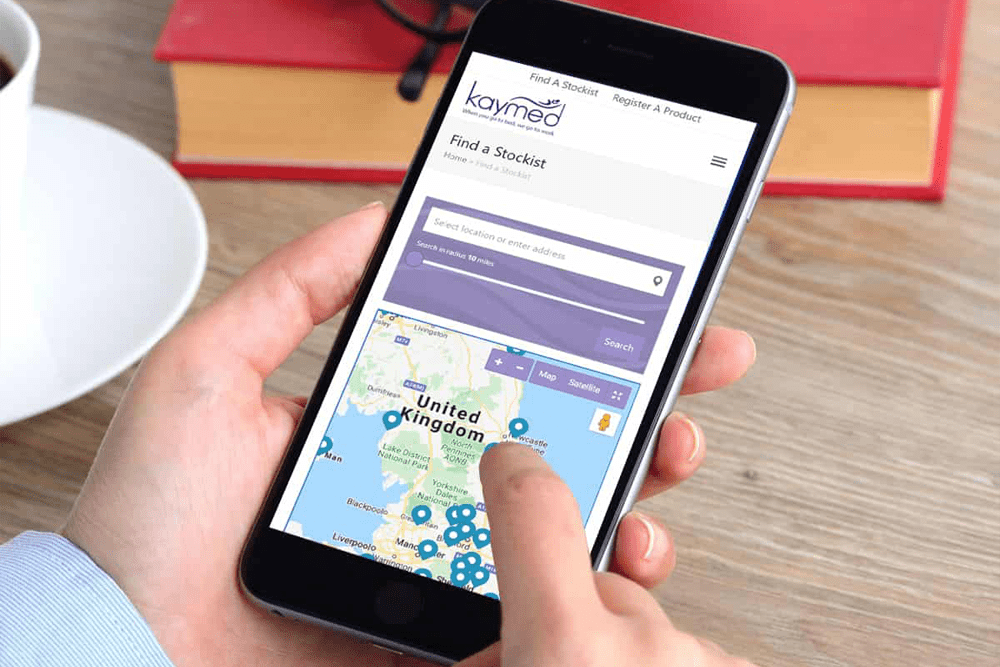Common approaches to pricing
Pricing strategies refer to the various approaches that businesses use to determine the prices of their products or services. These strategies take into account factors such as production costs, competition, consumer demand, and perceived value. Here are some common approaches to pricing:
- Cost-Based Pricing: This approach involves setting prices based on the cost of producing the product or service, plus a desired profit margin. It can be calculated using methods like cost-plus pricing, where a fixed percentage or amount is added to the production cost.
- Value-Based Pricing: Value-based pricing focuses on the perceived value of a product or service to the customer. Prices are set based on how much customers are willing to pay for the benefits and value they receive. This approach requires understanding customer preferences and positioning the product as offering unique value. For example how much would you pay for a bottle of water at the motorway services compared to the supermarket.
- Competitor-Based Pricing: With this strategy, prices are set in relation to what competitors are charging for similar products or services. Businesses might choose to price their products slightly lower (penetration pricing) or higher (premium pricing) than competitors, depending on their positioning and market objectives.
- Dynamic Pricing: Dynamic pricing involves adjusting prices in real-time based on factors such as demand, time of day, season, and even individual customer behaviour. It’s commonly used in industries like travel, hospitality, and e-commerce. This is why searching incognito when looking to book a flight can be beneficial
- Skimming Pricing: Skimming pricing involves initially setting a high price for a new product to target early adopters and customers willing to pay a premium. The price is gradually lowered as the product becomes more mainstream and attracts a broader audience. E.g when Apple launch a new phone the price is always at a premium level where “Apple Lovers” are willing to pay any price to be the first
- Penetration Pricing: Penetration pricing aims to capture a large market share by setting a lower-than-average price initially. This strategy is often used to quickly gain customers and establish the product in the market.
- Psychological Pricing: This approach uses pricing tactics that appeal to consumers’ psychological perceptions. Examples include setting prices just below a round number (e.g., £99.99 instead of £100), which can make the price seem more attractive.
- Bundle Pricing: Bundle pricing involves offering multiple products or services together at a discounted price compared to buying them individually. It encourages customers to purchase more items and can also enhance the perceived value.
- Premium Pricing: Premium pricing involves setting higher prices to position a product as exclusive or of higher quality. This strategy often relies on strong branding and marketing to justify the higher cost. Reassuringly expensive as the case may be!
- Economy Pricing: Economy pricing targets cost-conscious consumers by offering products at the lowest possible prices. This strategy requires efficient operations and a focus on reducing costs.
- Captive Pricing: Captive pricing involves offering a core product at a low price and then charging higher prices for complementary products or services. This approach can encourage customers to stick with a particular brand or ecosystem. This approach is commonly used on printers, whereby the printer ( and a low volume of ink) are offered at a low price – when you come to by replacement ink you have to buy from the manufacturer ( at a higher price)
- Value-Added Pricing: Value-added pricing involves adding extra features, services, or benefits to a product and charging a higher price to reflect the added value. This can differentiate a product and justify a premium price.
These are just some of the many pricing strategies that businesses can adopt. The most suitable approach depends on factors like the product or service being offered, the target market, competitive landscape, and business goals. Often, a combination of strategies might be used to address different market segments or situations.
How to calculate margin ( different ratios)
When calculating margins for selling products or services, there are several types of margins that businesses commonly use to evaluate their profitability. These margins help in understanding different aspects of the business’s financial health and performance. Here are some of the key types of margins:
Gross Margin: Gross margin is the difference between the cost of goods sold (COGS) and the revenue generated from the sale of goods or services. It represents the basic profitability of a company’s core operations before considering other operating expenses. The formula to calculate gross margin is:
- Gross Margin = (Revenue – Cost of Goods Sold) / Revenue * 100
Operating Margin: Operating margin indicates the profitability of a company’s core business operations, taking into account both the COGS and operating expenses such as salaries, rent, utilities, and other costs directly related to production and delivery of goods/services. The formula for operating margin is:
- Operating Margin = (Operating Income / Revenue) * 100
- (Operating Income = Revenue – COGS – Operating Expenses)
Net Profit Margin: Net profit margin measures the overall profitability of a business after accounting for all expenses, including COGS, operating expenses, interest, taxes, and other non-operating costs. It provides a comprehensive view of a company’s profitability. The formula to calculate net profit margin is:
- Net Profit Margin = (Net Profit / Revenue) * 100 (Net Profit = Revenue – Total Expenses)
Contribution Margin: Contribution margin is the amount remaining from revenue after deducting variable costs (direct costs that vary with production levels). It helps businesses understand how much each unit sold contributes towards covering fixed costs and generating profit. The formula for contribution margin is:
- Contribution Margin = (Revenue – Variable Costs) / Revenue * 100
EBITDA Margin: EBITDA stands for Earnings Before Interest, Taxes, Depreciation, and Amortization. EBITDA margin measures a company’s operational profitability without factoring in interest, taxes, and non-cash expenses like depreciation and amortisation. The formula for EBITDA margin is:
- EBITDA Margin = (EBITDA / Revenue) * 100
Calculating these margins involves obtaining accurate data on revenue and various expenses. These margins provide insights into different aspects of a business’s financial performance, enabling better decision-making and analysis. Keep in mind that margin calculations can vary depending on the accounting methods used and the industry in which the business operates.
When is it a good idea to use gross margin
Gross margin is a financial metric that represents the difference between a company’s revenue and its cost of goods sold (COGS), expressed as a percentage of revenue. It’s a key indicator of a company’s profitability and efficiency in producing goods or services. Here are some situations when it’s a good idea to use gross margin:
- Comparing Performance: Gross margin can be used to compare the performance of different products, product lines, or business units within a company. This helps identify which areas are more profitable and which might need improvement.
- Assessing Efficiency: A higher gross margin generally indicates that a company is producing its products efficiently and has better control over its production costs. Comparing the gross margins of different periods can help assess improvements in operational efficiency.
- Setting Pricing Strategies: Gross margin can guide pricing decisions. If the gross margin is low, it might be an indication that the pricing strategy needs adjustment to cover costs and generate a reasonable profit.
- Analysing Industry Trends: Comparing a company’s gross margin to industry benchmarks can help identify whether the company is performing well relative to its competitors. Industries with similar characteristics usually have similar gross margin ranges.
- Investment Decisions: Investors often look at a company’s gross margin when evaluating its financial health. Consistently high gross margins suggest that a company is competitive and able to maintain profitability, which can make it an attractive investment option.
- Identifying Cost Fluctuations: Sudden changes in gross margin can indicate shifts in the cost of production or pricing strategies. Monitoring these changes can help in identifying potential problems or opportunities.
- Managing Operating Costs: Gross margin analysis can assist in managing operating costs. If a company’s gross margin is decreasing, it might signal that costs are rising faster than revenue, prompting a closer look at cost containment measures.
- Planning for Expansion: Before expanding into new markets or introducing new products, evaluating potential gross margins can provide insights into the viability of the expansion and the potential profitability.
- Credit Evaluation: Lenders and creditors often use gross margin to assess a company’s ability to repay debt. A higher gross margin indicates better ability to cover costs, including debt obligations.
- Internal Performance Monitoring: Companies can use gross margin to monitor their own performance over time. By setting target gross margin percentages, they can evaluate how well they’re meeting their financial goals.
It’s important to note that gross margin should not be used in isolation. It’s most effective when considered alongside other financial metrics and industry context. Additionally, different industries have different typical gross margin ranges, so it’s important to compare a company’s gross margin to its peers within the same sector.
When is it a good idea to use net margin
Net margin, also known as net profit margin or net income margin, is a financial metric that represents the percentage of a company’s revenue that is left as net profit after all expenses, including operating expenses, interest, taxes, and other costs, are deducted. It provides insight into a company’s overall profitability and efficiency in managing its expenses. Here are some situations when it’s a good idea to use net margin:
- Evaluating Overall Profitability: Net margin is a broader measure of profitability compared to gross margin. It takes into account all costs associated with running a business, including operating expenses and taxes. It gives a more comprehensive view of how well a company is generating profit from its revenue.
- Comparing Financial Performance: Net margin is useful for comparing the financial performance of different companies or business units within the same company. It helps assess which entities are better at controlling expenses and generating profit.
- Assessing Cost Management: A higher net margin suggests effective cost management and efficient use of resources. Companies with low net margins might need to review their cost structures and identify areas for improvement.
- Investment Analysis: Investors use net margin to assess the overall financial health and profitability of a company. A higher net margin generally indicates a stronger ability to generate profit, making the company more attractive to investors.
- Industry Benchmarking: Comparing a company’s net margin with industry averages or competitors’ margins can provide insights into how well the company is performing within its sector and whether it’s maintaining a competitive position.
- Long-Term Sustainability: Sustained positive net margins are crucial for the long-term sustainability of a company. Companies with consistent net profits are better equipped to weather economic downturns and invest in growth opportunities.
- Risk Assessment: Low or negative net margins could indicate financial instability. Lenders and creditors often look at net margin when assessing a company’s creditworthiness, as it reflects the company’s ability to cover its obligations.
- Strategic Planning: When planning for business growth or expansion, understanding the net margin helps in setting realistic financial goals and projecting the potential profitability of new ventures.
- Tax Planning: Since net margin accounts for taxes, it’s important for tax planning and compliance. Companies can use net margin to estimate their tax liabilities and make appropriate financial preparations.
- Operational Efficiency: Monitoring net margin over time can help identify trends in the company’s financial efficiency. Consistent improvement in net margin might indicate successful cost reduction strategies or revenue growth.
Remember that net margin can be influenced by various factors, including the company’s industry, size, business model, and economic conditions. It’s essential to consider net margin in conjunction with other financial metrics to gain a comprehensive understanding of a company’s financial performance and health.
Pricing Problems
Setting the right price for a product is a multifaceted endeavour that entails numerous challenges and considerations. One of the primary difficulties is determining a price that accurately reflects the perceived value of the product. Striking the balance between pricing too low, which might raise doubts about the product’s quality, and pricing too high, which could discourage potential customers, is a delicate task. The price must align with the benefits and features offered by the product to ensure customers find it compelling.
Competitor pricing poses another significant challenge. Monitoring and responding to the pricing strategies of competitors is crucial for maintaining a competitive edge. Pricing significantly above competitors could lead to a loss of market share, while setting prices too low might trigger a detrimental price war that erodes profitability for all involved.
An essential consideration in pricing is ensuring that the price adequately covers the costs associated with production, operation, and ideally, generates a sustainable profit. Underestimating costs can result in under-pricing, leading to financial strain, while overestimating costs could lead to an overpriced product, dissuading potential buyers.
Market segmentation adds complexity to the pricing equation. Different customer segments often exhibit distinct price sensitivities. Balancing pricing strategies to cater to various segments while maintaining overall profitability requires a strategic approach to segmentation and pricing differentiation.
Understanding demand elasticity is critical. How responsive demand is to price changes can significantly impact revenue. If demand is highly elastic, even a slight price increase could lead to a notable decrease in sales. Therefore, accurately gauging customer responsiveness to price fluctuations is vital.
The use of discounts and promotions presents both opportunities and challenges. While these strategies can attract customers and drive sales, overreliance on discounts can condition customers to expect lower prices, potentially undermining the perceived value of the product at its regular price.
Distribution channels also play a role in pricing decisions. Different channels have varying cost structures and customer expectations, influencing the optimal pricing strategy for each.
Deciding between price skimming and penetration strategies is another pivotal challenge. Opting for a high initial price to capture early adopters (skimming) or setting a lower price to quickly gain market share (penetration) requires careful consideration of the product’s positioning and long-term goals.
Potential cannibalisation is a concern when introducing a new product at a lower price point. This might cannibalise sales of an existing, higher-priced product within the same company, impacting overall revenue.
External economic factors like inflation and currency fluctuations can also disrupt pricing strategies. These factors can affect production costs and necessitate adjustments to maintain profitability and competitiveness.
Perceived fairness of the price is a psychological aspect that can significantly impact customer reactions. If the price is seen as unfair in relation to the product’s attributes, it can lead to customer dissatisfaction and negative brand perceptions.
Additionally, regulatory and legal factors may influence pricing decisions, particularly in industries subject to price controls or anti-price gouging laws.
Considering the long-term viability of the pricing strategy is crucial as well. Starting with an unsustainably low price can hinder the ability to raise prices in the future without alienating customers. Similarly, beginning with a high price might limit the product’s initial market potential.
Solving these pricing challenges necessitates a comprehensive approach involving thorough market research, data analysis, understanding consumer behaviour, and adapting to evolving market conditions. Regularly reassessing and refining pricing strategies is essential for remaining competitive and achieving lasting profitability.
How we explain our approaches to pricing
As a marketing and web agency our pricing strategy is carefully designed to reflect the value we bring to our clients and the market dynamics while ensuring fairness and sustainability for both parties involved.
First and foremost, we believe in transparency and open communication with our clients. When determining the pricing for our services, we engage in thorough discussions to understand the specific needs and requirements of each project. This allows us to tailor our services to meet the unique demands of our clients, ensuring that they receive optimal value for their investment. By taking the time to understand their goals and challenges, we can provide pricing that aligns with the outcomes they are seeking to achieve.
Our pricing structure takes into consideration various factors, such as the complexity of the project, the materials and resources required, and the expertise of our team. We make sure to account for all costs associated with the project, including development, labour, overhead, and any additional services that might be required, such as customisation or speed of delivery. This comprehensive approach allows us to offer a pricing model that is both competitive in the market and reflective of the high-quality standards we maintain.
Furthermore, our pricing approach is adaptive to market trends and fluctuations. We keep a close eye on industry dynamics, supplier costs, and economic changes that might impact the cost of labour and resources. This enables us to make informed adjustments to our pricing as needed, ensuring that our clients continue to receive fair and up-to-date rates. Our commitment to staying current with market conditions demonstrates our dedication to providing pricing that is both realistic and sustainable over the long term.
It’s important to note that our pricing strategy extends beyond just the initial transaction. We emphasise building lasting relationships with our clients. This means that we take into account the long-term value and benefits that our services provide. By focusing on the positive impact our products have on our clients’ businesses, we create a pricing structure that reflects the value our partnership brings to their success.
In essence, our approach to pricing services as an agency revolves around open communication, tailoring solutions to individual needs, transparent cost analysis, adaptability to market dynamics, and a focus on long-term value. This approach ensures that our clients receive competitive and fair pricing that aligns with their goals while allowing us to sustain our commitment to quality and innovation.

Does a marketer need to know about pricing
It’s absolutely, essential that those involved in marketing have an understanding pricing and margins. Pricing directly impacts a company’s profitability, positioning in the market, and customer perception. Here’s why knowledge of pricing and margins is important for marketers:
- Positioning and Value Perception: Pricing influences how customers perceive the value of a product or service. Marketers need to ensure that the pricing aligns with the perceived value, whether the product is positioned as a premium offering, a budget-friendly option, or somewhere in between.
- Competitive Analysis: Marketers need to understand how their product’s pricing compares to similar offerings in the market. This knowledge helps in determining whether the product is competitively priced or if adjustments are necessary.
- Profitability: Pricing directly impacts a company’s bottom line. Marketers need to balance the desire to generate revenue with the need to maintain healthy profit margins. Pricing too low can lead to reduced profitability, while pricing too high might discourage potential customers.
- Demand Elasticity: Marketers should consider how changes in pricing might affect customer demand. Understanding demand elasticity helps in making informed decisions about price adjustments and potential revenue changes.
- Promotions and Discounts: Marketers often use promotions and discounts to stimulate sales. A solid understanding of pricing and margins ensures that these promotions are financially viable and don’t negatively impact profits.
- Customer Segmentation: Different customer segments might have different price sensitivities. Marketers need to analyze these segments and tailor pricing strategies accordingly.
- Product Lifecycle Management: Pricing strategies can vary throughout a product’s lifecycle, from launch to maturity to decline. Marketers need to adjust pricing to account for changing market conditions and competitive pressures.
- Channel Management: If a company uses various distribution channels, understanding pricing and margins helps in setting consistent pricing across all channels while factoring in associated costs.
- Long-term Sustainability: Unprofitable pricing practices can lead to financial instability. Marketers need to contribute to the company’s long-term sustainability by ensuring pricing strategies are aligned with profitability goals.
- Communication Strategy: Marketers often communicate pricing information to customers. They need to convey the value proposition effectively while justifying the price point.
In essence, pricing and margins are integral aspects of a company’s overall marketing strategy. Marketers need to collaborate closely with other departments, such as finance and sales, to ensure that pricing decisions align with business objectives and maintain a healthy balance between customer value and profitability.
Should Premium Brands offer Discounts?
When considering premium brands like Rolls-Royce, the decision to offer pricing discounts becomes a nuanced consideration. At the heart of this deliberation lies the delicate balance between maintaining exclusivity and stimulating demand. Rolls-Royce has long epitomised luxury, craftsmanship, and prestige, attributes that are closely intertwined with its premium pricing strategy. Discounting could potentially undermine this carefully cultivated image of exclusivity and opulence.
However, even for renowned brands like Rolls-Royce, there are scenarios where offering pricing discounts might be strategically prudent. For instance, during economic downturns or periods of sluggish sales, providing incentives such as discounts or special financing offers could help stimulate demand and bolster sales figures. This approach seeks to strike a balance between preserving brand cachet and adapting to market conditions.
Moreover, offering discounts could serve as a means to attract new customers who might otherwise perceive Rolls-Royce automobiles as unattainable. By making the brand more accessible, albeit still exclusive, Rolls-Royce could expand its customer base and introduce its luxury experience to a wider audience.
It’s also worth noting that discounts need not always take the form of direct price reductions. Rolls-Royce could explore alternative strategies such as offering complimentary upgrades, exclusive experiences, or customisation options bundled into the purchase, thus enhancing perceived value without compromising on pricing integrity.
Ultimately, the decision to offer pricing discounts for premium products like Rolls-Royce cars requires careful consideration of various factors, including market dynamics, brand positioning, and long-term strategic objectives. While discounting may seem counterintuitive for a brand synonymous with luxury, when executed judiciously, it can be a tool for maintaining relevance and sustaining growth in an ever-evolving marketplace.












